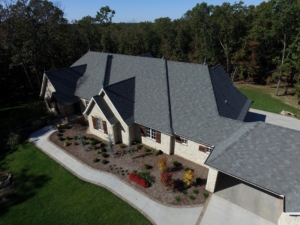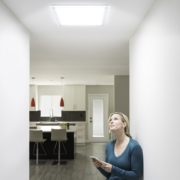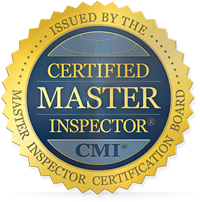Top 4 Factors That Affect The Cost Of A New Roof
Orland Park Home Inspection Explains The Cost Of A New Roof
 No one wants to pay more for something that they have to, especially when it comes to a large home improvement purchase. So, why can there be thousands of dollars difference between contractor bids for neighboring homes? And how can homeowners get an idea of what a new roof will cost?
No one wants to pay more for something that they have to, especially when it comes to a large home improvement purchase. So, why can there be thousands of dollars difference between contractor bids for neighboring homes? And how can homeowners get an idea of what a new roof will cost?
In general, labor for a new roof should make up 60-65 percent of the cost and most of the remaining cost, 30-35 percent, should be the cost for materials, according to Rick Taylor, a longtime roofing contractor now working as a training manager for TAMKO Building Products, Inc. After labor and materials, the remaining costs, approximately 5-10 percent of the total, should consist of disposal for any building materials that need to be removed and any additional fees like paying to have the shingles craned up to the roof or renting scaffolding for the job.
As for the specific dollar figure, there are many factors that go into a roofing bid. Here are the top four factors that can affect the cost of a new roof.
-
Size
The larger the house, the larger the roof, and the more shingles needed to cover it. According to industry standards, one square of shingles is the amount needed to cover 100 square feet of roof, and as a rule of thumb for most three-tab and laminated shingles, there are three shingle bundles in each square. To estimate the number of squares needed, divide the total square feet by 100.
When calculating how much roofing you need, be sure to take into account any additional, detached buildings that would benefit from having a matching roof to the main house — for example, a detached garage, sheds or gazebos.
-
Pitch
The pitch, or angle, of your roof, can also affect the cost of re-roofing. A roof with a steep pitch can increase the final roof bid as contractors may build in additional costs for more safety equipment and a longer timetable to complete.
“Typically, a single-story house is considered ‘walkable’ and is going to be easier to roof, but steep-roofed houses and anything two-story is going to be considered ‘non-walkable’ and will cost more to re-roof,” Taylor said.
-
Roofing material
The type of roofing chosen will also affect the final cost. Three-tab asphalt shingles are some of the most economical options but tend to have shorter warranties than the more popular laminated architectural shingles. And not all laminated shingles are created equal. Unique or specialty styles, like the added dimension of Heritage(R) Vintage(R) shingles or the extra-wide cut of Heritage Woodgate(R), can also affect the final cost, and may also come with a longer warranty than standard cuts.
Metal shingles carry a higher price tag as well, but also feature longer warranties and potential energy savings. Natural materials like wood shake and stone slate will raise the cost of the roof even more.
-
Type
Whether the roof is a “complete tear-off,” or a “layover” will also affect the final bid. If a contractor has to remove all existing shingles before installing new shingles, the labor and disposal costs will increase. Doing a layover is more economical, although homeowners need to discuss with their contractor what local building codes require and implications for the manufacturer’s warranty. Taylor said TAMKO is one of few manufacturers that will provide a limited warranty and arbitration agreement regarding their laminated shingles when applied over one layer of three-tab shingles.
Consider these four factors and you’ll have a much better handle on how the type of project and options are chosen will affect your new roof’s cost. – (BPT)
How Much Does It Cost For A New Roof?
https://www.youtube.com/watch?v=_NTnDL23q0A







Leave a Reply
Want to join the discussion?Feel free to contribute!